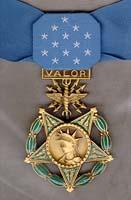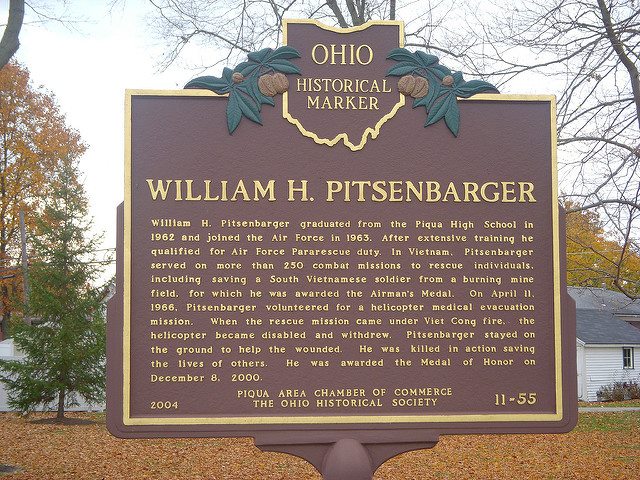Hosted by USAF PJ Association
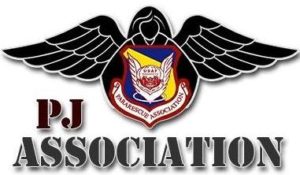 |
“It is my duty, as a member of the Air
Rescue Service, |
Pararescueman Killed in Action
William H. PitsenbargerAirman First Class |
|
|
|
|
On April 11, 1966, in thick jungle
near Saigon, an infantry company on 134 soldiers from the 1st Infantry
Division (the "Big Red One") was surrounded by a Viet Cong battalion of
approximately 500 troops. In a fierce firefight, the North Vietnamese
surrounded and pinned down the Americans. As the battle went on, the
number of U.S. casualties grew steadily. |
|
Air Force Cross Narrative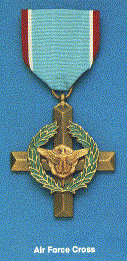 The President of the United States of America, authorized by Title 10, Section 8742, United States Code, awards the Air Force Cross to Airman First Class William H. Pitsenbarger for extraordinary heroism in connection with military operations against an opposing armed force near Cam My, Republic of Vietnam, on 11 April 1966. On that date, Airman Pitsenbarger was a Rescue and Survival Specialist aboard a helicopter engaged in the evacuation of American casualties in a dense jungle. With complete disregard for his personal safety, Airman Pitsenbarger voluntarily rode a rescue hoist more than one hundred feet to the ground and organized and coordinated rescue efforts at the scene. During the rescue operation, he cared for and prepared the casualties for evacuation, and ensured that the recovery operation continued in a smooth and orderly fashion. Following the recovery of the ninth casualty, the rescue aircraft hovering overhead was damaged and disabled by automatic weapons fire. The helicopter was forced to abandon recovery efforts to make an emergency landing at a nearby airstrip. Airman Pitsenbarger volunteered to remain on the ground and administer medical treatment to the wounded. Shortly after rescue efforts were interrupted, the area came under sniper and mortar fire. Airman Pitsenbarger repeatedly exposed himself to intensive automatic fire while gathering rifles and ammunition from fallen comrades which he passed among the defenders. His bravery and determination in the face of overwhelming odds are in keeping with the highest standards of performance and traditions of the American fighting man under attack. The extraordinary heroism and aggressiveness of Airman Pitsenbarger reflect the highest credit upon himself and the United States Air Force.
Medal of Honor Narrative |
|
|
STORY
ABOUT THE SAR BILL PITSENBARGR WAS AWARDED THE MEDAL OF HONOR |
|
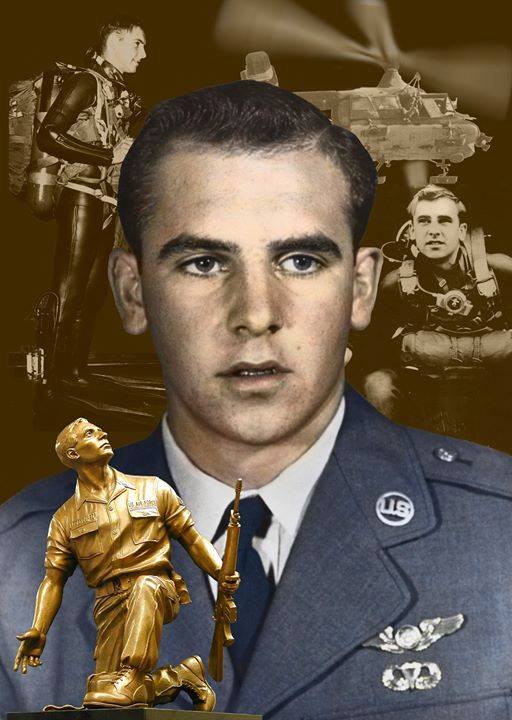 |
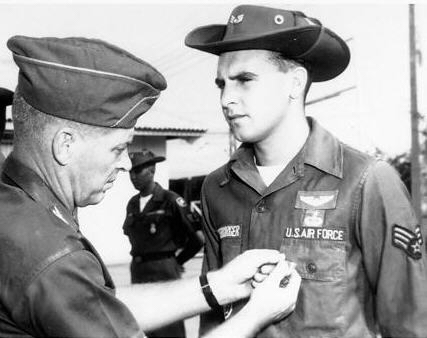 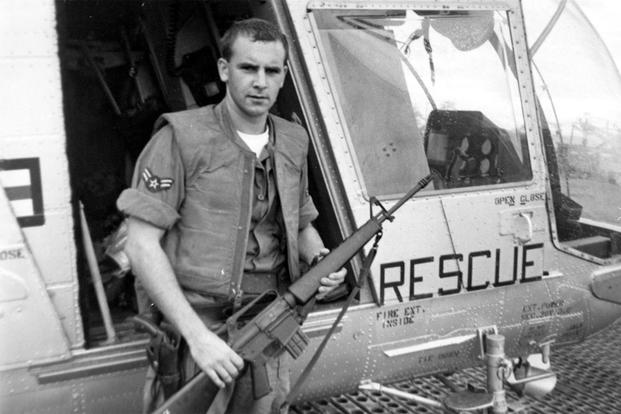 |
|
|
|
|
DOCUMENTS USED FOR MOH SUBMISSION |
|
|
1966 Airman Magazine Article ONE DAY AT A TIME |
2000 Airman Magazine Article THEY CALLED HIM PITS |
|
|
|
|
A movie about Bill Pitsenbarger's mission was released in 2020. The
title is "The Last Full Measure" and it is an accurate portrayal of
Bill's last mission and the long delay in finally being awarded the
Medal of Honor. There are two issues in the movie that require
explanation. First, the helicopter used in the movie was a UH-1 Huey;
but, the HH-43 Huskie was the actual type flown on that mission. The
reason for this swap of helicopter types was that there were no HH-43's
that were flyable for use in the movie. The last flight by the USAF of
this helicopter was in 1975. At the time of the movie, there was only
one known HH-43 that was still flying and it was in the USA. The jungle
scenes of the movie was filmed in Thailand. The second issue is the
uniform worn by Pitsenbarger in the movie was the USAF fatigue uniform
with blue and white patches and rank insignia. This was the same uniform
worn by airmen the world over in the 1960's. Airman Pitsenbarger
actually wore the same type jungle fatigues worn by the Army soldiers in
the movie. The more visible uniform worn by Pits was an intentional
deviation from the facts in order that Pits would stand out from the
grunts. Had he worn the same uniform as the Army troops it would have
been very difficult to ascertain who was who in the movie.
Movie Synopsis 32 years later, Pentagon staffer Scott Huffman, is reluctantly tasked with investigating a posthumous Medal of Honor request for Pitsenbarger by his parents and Tom Tulley, Pitsenbarger's partner on the fateful mission. Huffman seeks out the testimony of Army veterans who witnessed or were saved by Pitsenbarger's extraordinary valor. As Huffman learns more about Pitsenbarger's selfless courage, he uncovers a decades-long, high-level conspiracy: as of Pitsenbarger's death in combat in 1966. The Air Force had never put forth the names of enlisted personnel to receive the Medal of Honor. This prompts him to put his own career on the line, potentially creating controversy around the company's former commanding officer who ordered the highly dangerous mission, and who is now a US senator seeking reelection. When a Senate effort to award the medal fails on the floor of
Congress due to unrelated political infighting, Huffman goes public with
the story, and ultimately the Medal of Honor is awarded to Pitsenbarger
by presidential decree. Pitsenbarger's father, who is dying of cancer,
and mother are in attendance as their son's duty, courage and sacrifice
is recounted. The Air Force Secretary presents the medal to the parents,
then recognizes everyone in attendance, all of whose lives were
influenced by Pitsenbarger's actions, saying, "This is the power of what
one person can do." The epilogue points out that as of 2019, of the
3,489 Medal of Honor recipients among millions of US military personnel,
only three airmen have been enlisted Air Force. |
|
